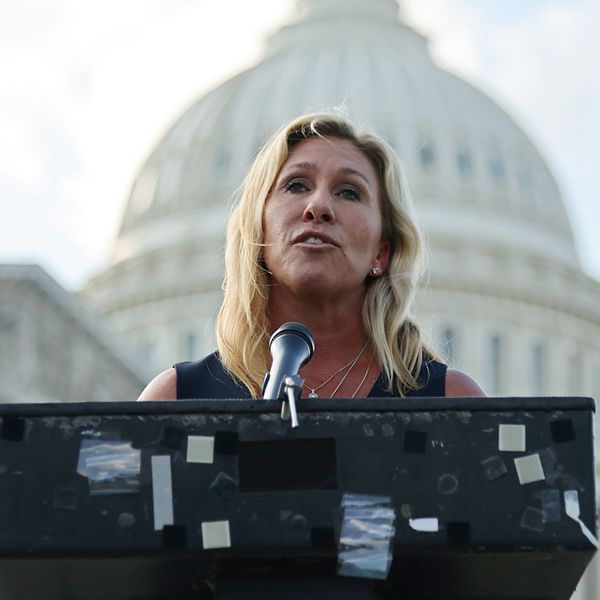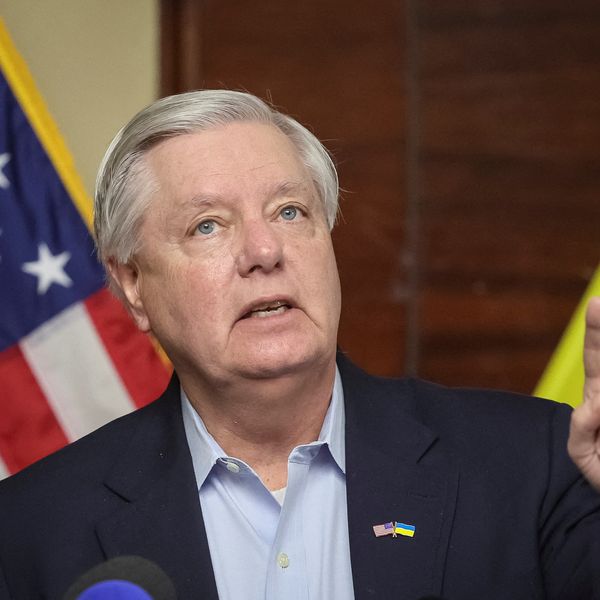Recent comments from CENTCOM Commander General Frank McKenzie about Iran’s 2020 strike on an American base in Iraq, if proven true, highlight once more the imperative need for President Biden to quickly kickstart the Iran nuclear deal’s revival.
After days of suspense and unease, the world breathed a collective sigh of relief when Donald Trump signaled on January 8, 2020 that the United States would not be responding militarily to Iran’s ballistic missile strikes on its forces in Iraq. The strikes had been in retaliation for the U.S. killing of revered Iranian General Qassem Soleimani. Trump’s announcement marked the end of a military dust-up that could have easily mutated into a fully-fledged war with Iran.
As news of the strike splashed frantically across media outlets, policymakers, pundits, and analysts alike wondered whether the Iranians intentionally avoided U.S. casualties in order to prevent further escalation.
This theory gained traction when the Iraqi government announced it had been notified in advance by Iranian authorities of their plans to attack American bases inside Iraq. This was seen by some analysts as Iran’s way of giving U.S. forces a heads-up and thus ample time to take shelter before the missiles hit.
Gauging Iran’s intent was further complicated by the mixed signals coming from within the Trump administration. While U.S. officials as senior as Vice President Mike Pence, Joint Chiefs chairman General Mark Milley, and Secretary of State Mike Pompeo reiterated their conviction that Iran’s strikes had indeed been launched with the express intention to kill Americans, Trump had emerged as the lone optimist, describing the damage to U.S. forces as “minimal” and claiming that Iran was now “standing down.”
But ever since the strike took place in January 2020, a growing body of evidence has challenged the notion that the Iranian leadership went to great lengths to avoid the specter of dead American troops.
A recently-aired 60 Minutes piece lends further credence to these earlier reports. Here, too, eye-witness accounts depict a state of utter disarray at the base as the ballistic missile salvos slammed into the base: troops scrambling for cover, dozens crammed into ill-equipped bunkers made for a much smaller number of people, and desperate attempts to avoid being burned alive by the ensuing explosions and fires.
But in addition to these eye-witness accounts, 60 Minutes also aired an interview with McKenzie, which casts further doubt on the contention that Iran intended a non-lethal outcome. Iran, according to McKenzie, had purchased commercial satellite images of the base on the day of the strike. McKenzie said he waited until Iran had purchased its last image of the day before ordering the evacuation of the base. The out-of-date maps accessible to Iran, he claims, would have shown a sprawling and fully operational base with U.S. troops and aircraft. This, McKenzie claims, is the map the Iranians were acting on.
According to the 60 Minutes piece, although most service personnel had evacuated the base, a substantial number had to remain. Between 100 and 150 U.S. troops, McKenzie said, could very well have been killed in the strike. And yet despite the intensity of the firepower, as well as the ensuing explosions and fires, not one soldier was killed. (Though around 110 U.S. service members were later diagnosed with traumatic brain injury.)
But as nonproliferation scholar Jeffrey Lewis illustrates, one should take McKenzie’s comments with a pinch of salt, especially in light of his false claim that Soleimani had been orchestrating an imminent attack on U.S. forces. However, if found to be factually sound, McKenzie’s statements may help explain why senior members of Iran’s Revolutionary Guard Corps, the military force behind the ballistic strike, could provide such unrealistic estimates of the number of American casualties. IRGC estimates of the supposed American death toll fluctuated between dozens and well over 100.
For the U.S. troops at the base, the zero-casualty figure could only be attributed to a singular stroke of divine luck. “The hand of God protected us,” Army Major Alan Johnson told 60 Minutes, “because, really, nobody should have lived through this.” It was all due to “God being on our side,” said Air Force Lt. Col. Staci Coleman.
Though Iran’s ballistic missile attack was triggered by the Soleimani’s assassination, it is important to remember that this suspense-laden military skirmish did not occur in a political vacuum. It was merely a stage in the escalation chain set off by Trump’s withdrawal from the Iran nuclear deal, or JCPOA, and his “maximum pressure” on Iran.
That the two countries could so rapidly climb the rungs of the escalation ladder and then teeter perilously on the brink of all-out war should serve as another reminder to the Biden administration of the imperative need to resuscitate the JCPOA by lifting sanctions on Iran. Doing so can play a key role in preventing the fertile breeding-ground for military escalation to spawn.
But so long as the Biden administration chooses to leave Trump’s sanctions intact, the possibility of further military conflict between the U.S. and Iran lives on. And as the harrowing accounts of what unfolded at Ain al-Asad illustrate, in the case of a new military conflict, the Iranians will be both willing and able to deliver lethal strikes, a prospect that benefits neither Iran nor the US.
Moreover, since the strike on the Ain al-Asad base, Iran has unveiled further enhancements and expansions to its ballistic missile program, which enjoys widespread support from the Iranian public. One major development is a new rail-based rapid-fire underground platform capable of launching ballistic missiles in quick succession, designed to overwhelm enemies’ anti-missile systems. The country has also showcased a new “missile city” on the Persian Gulf shoreline.
Biden can drastically reduce the probability of Iran’s growing missile capability being used on U.S. forces by reviving the JCPOA and ensuring its survival in the years to come. As shown by the most recent rocket attack on Ain al-Asad, which followed the U.S. bombing of Iran-aligned militia just days earlier, the JCPOA’s revival cannot come too soon.














